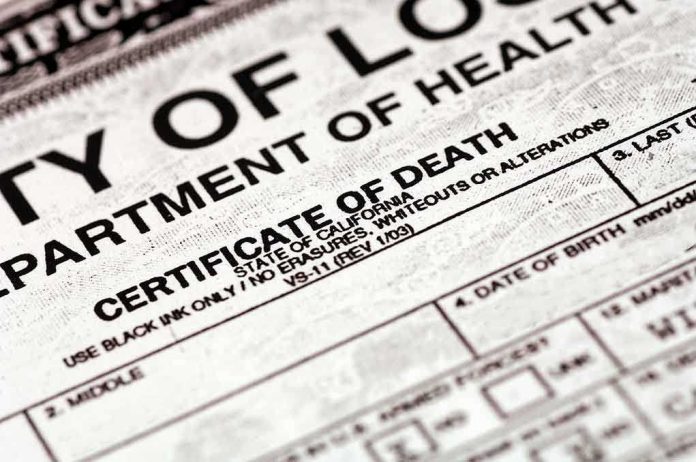
How does a healthy, beloved teacher end up with 23 stab wounds—10 to the back and neck—locked in her own apartment, only for officials to call it suicide not once, but twice?
Story Snapshot
- A teacher’s violent death with 23 stab wounds is ruled suicide again, fueling widespread skepticism and outrage.
- Major medical examiners and legal experts are deeply divided, turning the case into a forensic and legal battleground.
- The family’s fight for answers exposes uncomfortable questions about the reliability of official investigations and the handling of mental health factors in death rulings.
- This case could reshape how suspicious deaths are investigated across America.
A Locked Room, a Shattered Family, and a City on Edge
Philadelphia, January 26, 2011: Ellen Greenberg, a bright young teacher, is discovered dead on her kitchen floor by her fiancé. The scene is a locked apartment, the weapon a single kitchen knife, and Ellen bears 23 stab wounds—10 of them to her back and neck. There are no defensive wounds and no foreign DNA on the knife. The initial ruling is homicide, but in a stunning reversal, the city’s Medical Examiner’s Office changes it to suicide, citing the locked door and Ellen’s struggles with anxiety. The case ignites a powder keg: how could a woman inflict such violence on herself, and why would authorities reverse course so dramatically?
The wounds themselves are the epicenter of suspicion. Even seasoned pathologists rarely encounter suicide by stabbing, let alone to the back and neck. Yet Dr. Lindsay Simon, brought in for a recent review, doubled down: “Many of the wounds could be hesitation wounds,” she claimed, pointing to Ellen’s mental health history and the lack of forced entry. Meanwhile, forensic experts like Dr. Priya Banerjee counter that the sheer number and placement of wounds defy the logic of suicide. The family’s attorney, Joseph Podraza, calls the official report “total rubbish,” accusing investigators of ignoring crucial evidence and failing to account for inconsistencies that would make any seasoned detective’s eyes widen.
The Anatomy of a Controversy: Science Versus Common Sense
The city’s explanation hinges on the apartment’s security and the absence of another person’s DNA. Officials argue Ellen was alone, the door was locked from the inside, and the knife told no tales. Yet, critics point out that evidence can be overlooked, especially when the narrative becomes convenient. Anxiety, while real, is not a direct path to violence of this magnitude. Ellen’s friends, family, and legal advocates argue that only a re-investigation can restore faith in the system, suggesting the authorities may have rushed to close a baffling case.
The family’s legal battle has lasted more than a decade, with fresh lawsuits and expert reviews reigniting public outrage. Critics question whether the Medical Examiner’s Office is more interested in protecting its reputation than pursuing the truth. The case’s legal twists reveal a broader tension: how much weight should be given to mental health in death rulings, and how do institutions respond when their judgment is called into question? The lack of precedent for suicide by so many self-inflicted wounds only deepens the mystery.
Ripple Effects: What This Case Means for Justice in America
The Ellen Greenberg case has become a touchstone for debate on the reliability of forensic investigations, especially when they intersect with mental health. Legal experts warn that if such cases can be closed as suicides based on circumstantial logic and incomplete science, public trust in the justice system erodes. The city’s handling of the case has already led to lawsuits, costly settlements, and growing demands for transparency. The implications reach beyond Philadelphia, raising alarms for families and professionals everywhere who rely on authorities to get it right when the unthinkable happens.
For Ellen’s family, the fight goes on. Each new review, every legal maneuver, forces them to relive the trauma, but they press ahead, convinced that the truth has yet to come out. For the rest of America, Ellen’s story is a stark reminder that sometimes, the official version of events demands more scrutiny—not less. As the battle over what happened that January night continues, one fact remains: the questions raised by Ellen Greenberg’s death are far from answered, and the outcome could change the landscape of forensic justice for years to come.












